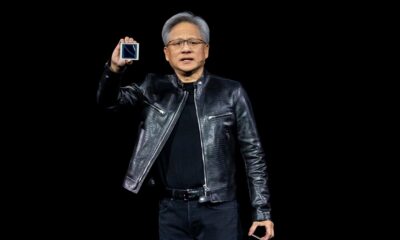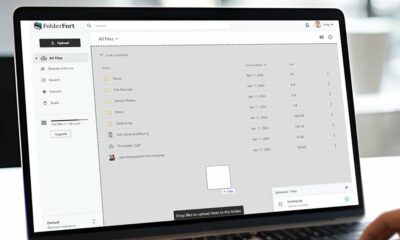TECHNOLOGY
A Futuristic Outlook On Technology
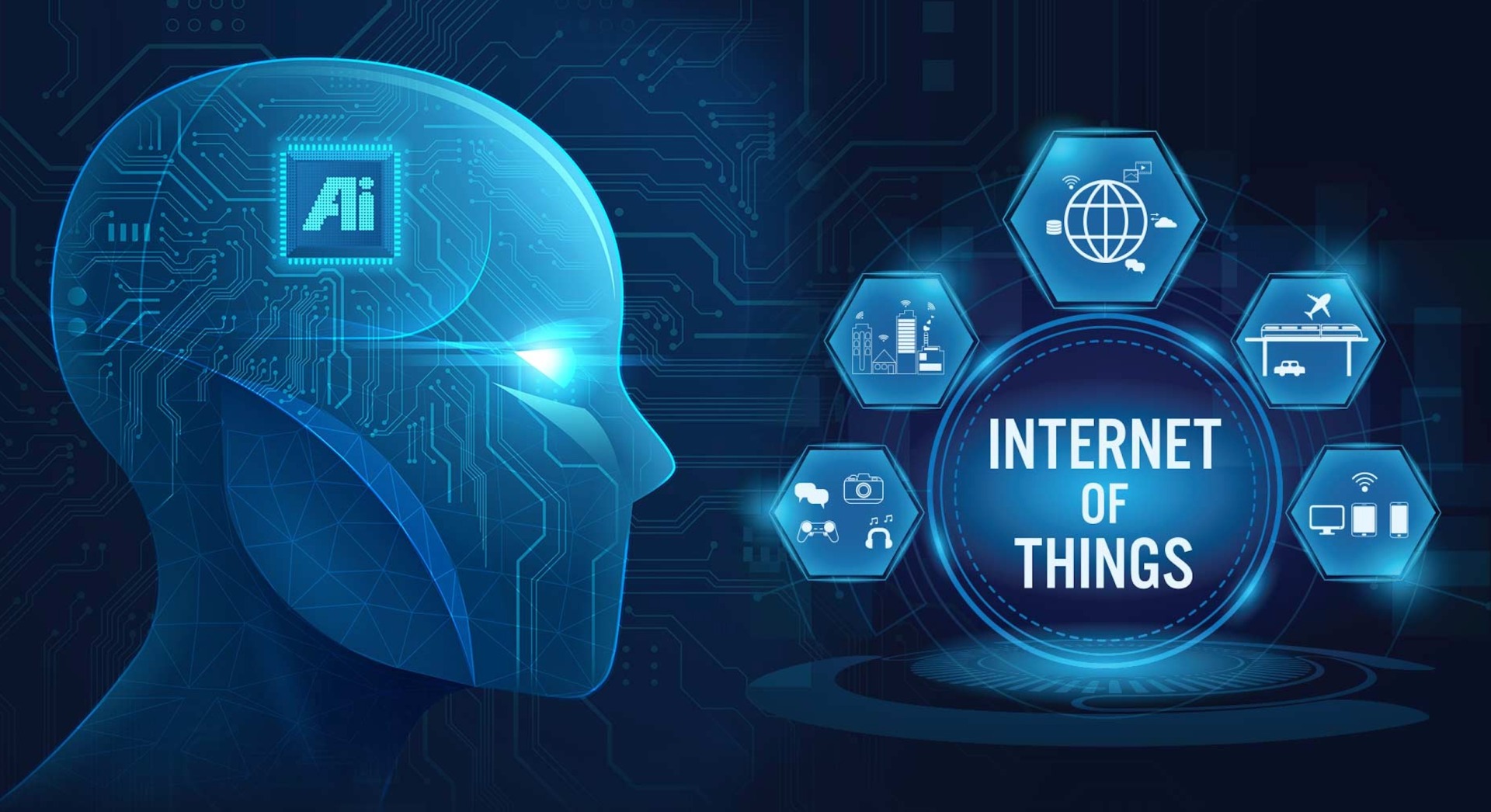
Artificial intelligence (AI) has already made amazing progress and has impacted society as a generally applicable technology.
But early AI research, equivalent to what we know today, began in the 1950s. Today, AI is still evolving. AI is helpful when there is a plethora of data. The Internet of Things (IoT) is expected to significantly increase the amount of generated data, which is now estimated to be around 2.5 quintillion bytes daily.
Now let’s look at the importance and process of integrating IoT and AI applications.
IoT Basics: Where Does IoT Meet AI?
“Internet of Things” (IoT) refers to a network of mechanical and digital components, computer systems, and sensors built into commonplace items. These items link the physical world to the internet by transferring data through a network.
The integration of microelectromechanical systems into modern IoT has evolved into wireless technologies, allowing for faster data transport over the internet. The convergence of artificial intelligence and information technology makes the study of unstructured machine-generated data possible, which yields insightful discoveries and innovative developments.
Today, some industries rely on IoT to boost operational effectiveness, improve customer service, boost corporate value, and support sound decision-making.
The Advantages of IoT and AI
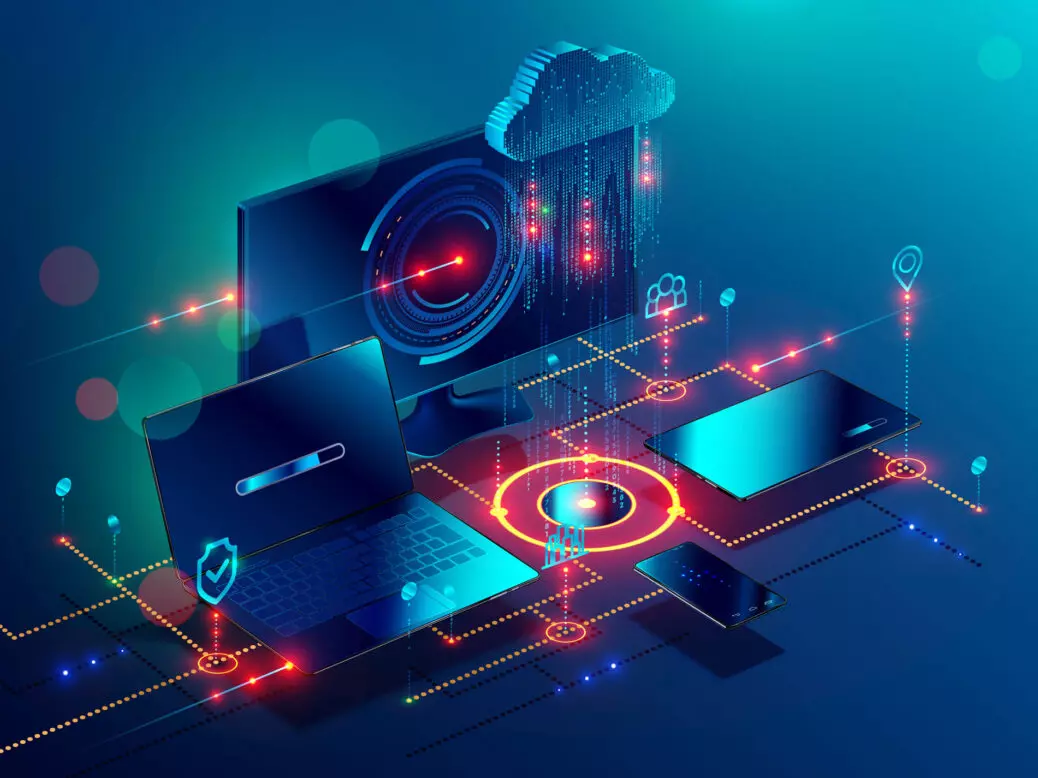
IoT can benefit AI applications in several ways:
IoT Data for Commercial Use
IoT data can be aggregated for useful data-driven feedback, facilitating efficient decision-making. Businesses might discover new market prospects by using the data generated by IoT. IoT can enhance customer outcomes and service delivery by accessing more data and cutting-edge analytics.
Time and Money Savings
Costs are decreased as a result of connected devices. Increased efficiency made possible by gathering various types of data results in cost savings and using less expensive materials.
Automation of Tasks
Devices that can connect to the internet make some daily tasks easier. With the help of automation capabilities, chores can be effortlessly managed with just one click, ranging from real-time AI-powered chatbots to home automation control systems.
Pipeline automation enables companies that provide AI-enabled solutions to make similar strides. Significant time savings in annotation and quality control are also included. Platforms like SuperAnnotate make completing tasks easier and getting better prediction outcomes easier.
Improved Standard of Living
IoT improves living conditions in addition to helping enterprises. Common instances of IoT raising living standards and encouraging sustainability are smart cities, intelligent homes, and food waste reduction techniques.
IoT Challenges for AI
IoT presents some advantages and breakthroughs, but there are also many problems. Here are a few examples:
Privacy concerns: Data risk rises as more gadgets connect and share information, calling for stronger security to prevent dangers like data leaks.
Data explosion: Organizations must adopt strategies to efficiently handle the vast number of IoT devices and manage the data they produce. Data lakes, data warehouses, and good governance become essential for processing datasets effectively.
Bug problems: One IoT device’s defect could spread to other linked devices, causing severe problems.
Issues of compatibility: Effective communication across various devices is challenging since IoT devices have no global compatibility standards.
The Benefits of Using AI in IoT
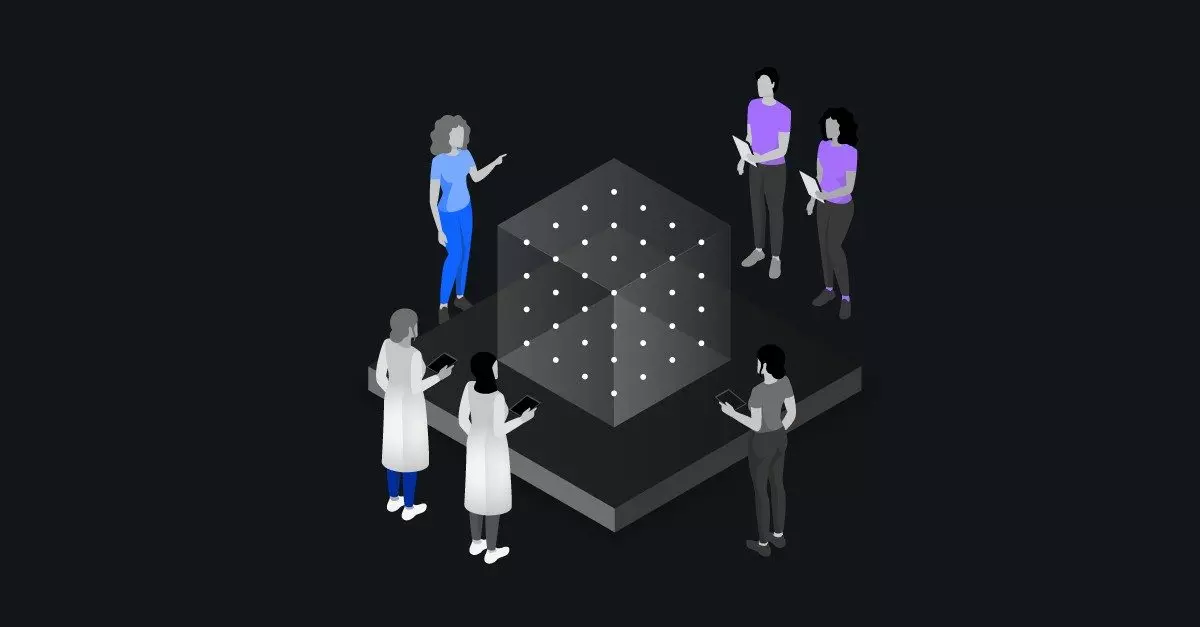
Many businesses integrate machine learning with IoT projects to acquire analytical insights across various use cases. This enables companies to acquire new insights and implement cutting-edge automation.
They can accomplish the following through the use of machine learning in IoT:
-
Create a coherent format for the data
-
Utilize cloud, edge, and device-based machine learning models
-
Utilize data directly on edge devices to enable complicated decision-making.
-
enabling data-driven progress across a range of sectors
Applications for AI and IoT

Although the principles of IoT have been explored, their implications for AI still need to be clear-cut. To acquire a competitive edge and encourage business growth, several firms are implementing IoT. IoT applications give businesses the tools to develop and implement effective risk management plans.
IoT is frequently used in AI applications, including:
Logistics
The Internet of Things in transport logistics improves material flow systems and the automatic identification and worldwide placement of freight, increasing energy efficiency.
Smart Cities
A “smart city” is an urban area that supports sustainable growth and a high standard of living. IoT enables smarter and more effective city management in governance, economy, and lifestyle sectors.
E-Health Management
E-healthcare with IoT support is essential for tracking and preventing health problems. Regardless of where they are, healthcare experts can now remotely monitor people. IoT healthcare solutions offer useful information for computations and medical breakthroughs.
Summing up
IoT, particularly AI-enabled IoT, has brought substantial improvements to our daily lives, revolutionizing businesses and management practices. The integration of intelligent appliances in households and the valuable insights it provides to businesses showcase the profound impact of IoT. Custom AI development companies play a significant role in leveraging the full potential of IoT, enabling businesses to create tailored solutions that maximize efficiency and innovation. As the awareness of IoT’s potential and benefits grows, the future of this technology looks promising with continued growth and advancements.
TECHNOLOGY
Next-gen chips, Amazon Q, and speedy S3

AWS re:Invent, which has been taking place from November 27 and runs to December 1, has had its usual plethora of announcements: a total of 21 at time of print.
Perhaps not surprisingly, given the huge potential impact of generative AI – ChatGPT officially turns one year old today – a lot of focus has been on the AI side for AWS’ announcements, including a major partnership inked with NVIDIA across infrastructure, software, and services.
Yet there has been plenty more announced at the Las Vegas jamboree besides. Here, CloudTech rounds up the best of the rest:
Next-generation chips
This was the other major AI-focused announcement at re:Invent: the launch of two new chips, AWS Graviton4 and AWS Trainium2, for training and running AI and machine learning (ML) models, among other customer workloads. Graviton4 shapes up against its predecessor with 30% better compute performance, 50% more cores and 75% more memory bandwidth, while Trainium2 delivers up to four times faster training than before and will be able to be deployed in EC2 UltraClusters of up to 100,000 chips.
The EC2 UltraClusters are designed to ‘deliver the highest performance, most energy efficient AI model training infrastructure in the cloud’, as AWS puts it. With it, customers will be able to train large language models in ‘a fraction of the time’, as well as double energy efficiency.
As ever, AWS offers customers who are already utilising these tools. Databricks, Epic and SAP are among the companies cited as using the new AWS-designed chips.
Zero-ETL integrations
AWS announced new Amazon Aurora PostgreSQL, Amazon DynamoDB, and Amazon Relational Database Services (Amazon RDS) for MySQL integrations with Amazon Redshift, AWS’ cloud data warehouse. The zero-ETL integrations – eliminating the need to build ETL (extract, transform, load) data pipelines – make it easier to connect and analyse transactional data across various relational and non-relational databases in Amazon Redshift.
A simple example of how zero-ETL functions can be seen is in a hypothetical company which stores transactional data – time of transaction, items bought, where the transaction occurred – in a relational database, but use another analytics tool to analyse data in a non-relational database. To connect it all up, companies would previously have to construct ETL data pipelines which are a time and money sink.
The latest integrations “build on AWS’s zero-ETL foundation… so customers can quickly and easily connect all of their data, no matter where it lives,” the company said.
Amazon S3 Express One Zone
AWS announced the general availability of Amazon S3 Express One Zone, a new storage class purpose-built for customers’ most frequently-accessed data. Data access speed is up to 10 times faster and request costs up to 50% lower than standard S3. Companies can also opt to collocate their Amazon S3 Express One Zone data in the same availability zone as their compute resources.
Companies and partners who are using Amazon S3 Express One Zone include ChaosSearch, Cloudera, and Pinterest.
Amazon Q
A new product, and an interesting pivot, again with generative AI at its core. Amazon Q was announced as a ‘new type of generative AI-powered assistant’ which can be tailored to a customer’s business. “Customers can get fast, relevant answers to pressing questions, generate content, and take actions – all informed by a customer’s information repositories, code, and enterprise systems,” AWS added. The service also can assist companies building on AWS, as well as companies using AWS applications for business intelligence, contact centres, and supply chain management.
Customers cited as early adopters include Accenture, BMW and Wunderkind.
Want to learn more about cybersecurity and the cloud from industry leaders? Check out Cyber Security & Cloud Expo taking place in Amsterdam, California, and London. Explore other upcoming enterprise technology events and webinars powered by TechForge here.
TECHNOLOGY
HCLTech and Cisco create collaborative hybrid workplaces

Digital comms specialist Cisco and global tech firm HCLTech have teamed up to launch Meeting-Rooms-as-a-Service (MRaaS).
Available on a subscription model, this solution modernises legacy meeting rooms and enables users to join meetings from any meeting solution provider using Webex devices.
The MRaaS solution helps enterprises simplify the design, implementation and maintenance of integrated meeting rooms, enabling seamless collaboration for their globally distributed hybrid workforces.
Rakshit Ghura, senior VP and Global head of digital workplace services, HCLTech, said: “MRaaS combines our consulting and managed services expertise with Cisco’s proficiency in Webex devices to change the way employees conceptualise, organise and interact in a collaborative environment for a modern hybrid work model.
“The common vision of our partnership is to elevate the collaboration experience at work and drive productivity through modern meeting rooms.”
Alexandra Zagury, VP of partner managed and as-a-Service Sales at Cisco, said: “Our partnership with HCLTech helps our clients transform their offices through cost-effective managed services that support the ongoing evolution of workspaces.
“As we reimagine the modern office, we are making it easier to support collaboration and productivity among workers, whether they are in the office or elsewhere.”
Cisco’s Webex collaboration devices harness the power of artificial intelligence to offer intuitive, seamless collaboration experiences, enabling meeting rooms with smart features such as meeting zones, intelligent people framing, optimised attendee audio and background noise removal, among others.
Want to learn more about cybersecurity and the cloud from industry leaders? Check out Cyber Security & Cloud Expo taking place in Amsterdam, California, and London. Explore other upcoming enterprise technology events and webinars powered by TechForge here.
TECHNOLOGY
Canonical releases low-touch private cloud MicroCloud

Canonical has announced the general availability of MicroCloud, a low-touch, open source cloud solution. MicroCloud is part of Canonical’s growing cloud infrastructure portfolio.
It is purpose-built for scalable clusters and edge deployments for all types of enterprises. It is designed with simplicity, security and automation in mind, minimising the time and effort to both deploy and maintain it. Conveniently, enterprise support for MicroCloud is offered as part of Canonical’s Ubuntu Pro subscription, with several support tiers available, and priced per node.
MicroClouds are optimised for repeatable and reliable remote deployments. A single command initiates the orchestration and clustering of various components with minimal involvement by the user, resulting in a fully functional cloud within minutes. This simplified deployment process significantly reduces the barrier to entry, putting a production-grade cloud at everyone’s fingertips.
Juan Manuel Ventura, head of architectures & technologies at Spindox, said: “Cloud computing is not only about technology, it’s the beating heart of any modern industrial transformation, driving agility and innovation. Our mission is to provide our customers with the most effective ways to innovate and bring value; having a complexity-free cloud infrastructure is one important piece of that puzzle. With MicroCloud, the focus shifts away from struggling with cloud operations to solving real business challenges” says
In addition to seamless deployment, MicroCloud prioritises security and ease of maintenance. All MicroCloud components are built with strict confinement for increased security, with over-the-air transactional updates that preserve data and roll back on errors automatically. Upgrades to newer versions are handled automatically and without downtime, with the mechanisms to hold or schedule them as needed.
With this approach, MicroCloud caters to both on-premise clouds but also edge deployments at remote locations, allowing organisations to use the same infrastructure primitives and services wherever they are needed. It is suitable for business-in-branch office locations or industrial use inside a factory, as well as distributed locations where the focus is on replicability and unattended operations.
Cedric Gegout, VP of product at Canonical, said: “As data becomes more distributed, the infrastructure has to follow. Cloud computing is now distributed, spanning across data centres, far and near edge computing appliances. MicroCloud is our answer to that.
“By packaging known infrastructure primitives in a portable and unattended way, we are delivering a simpler, more prescriptive cloud experience that makes zero-ops a reality for many Industries.“
MicroCloud’s lightweight architecture makes it usable on both commodity and high-end hardware, with several ways to further reduce its footprint depending on your workload needs. In addition to the standard Ubuntu Server or Desktop, MicroClouds can be run on Ubuntu Core – a lightweight OS optimised for the edge. With Ubuntu Core, MicroClouds are a perfect solution for far-edge locations with limited computing capabilities. Users can choose to run their workloads using Kubernetes or via system containers. System containers based on LXD behave similarly to traditional VMs but consume fewer resources while providing bare-metal performance.
Coupled with Canonical’s Ubuntu Pro + Support subscription, MicroCloud users can benefit from an enterprise-grade open source cloud solution that is fully supported and with better economics. An Ubuntu Pro subscription offers security maintenance for the broadest collection of open-source software available from a single vendor today. It covers over 30k packages with a consistent security maintenance commitment, and additional features such as kernel livepatch, systems management at scale, certified compliance and hardening profiles enabling easy adoption for enterprises. With per-node pricing and no hidden fees, customers can rest assured that their environment is secure and supported without the expensive price tag typically associated with cloud solutions.
Want to learn more about cybersecurity and the cloud from industry leaders? Check out Cyber Security & Cloud Expo taking place in Amsterdam, California, and London. Explore other upcoming enterprise technology events and webinars powered by TechForge here.




